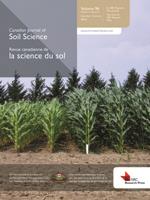Special Issue: Soil Interfaces for Sustainable Development
TITLE PAGE (1)
INTRODUCTION (1)
REVIEW (1)
ARTICLES (7)

No abstract available
No abstract available
